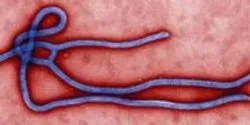Diseases

According to the public databases, there are currently approximately 1,900 locations in the human genome that produce microRNAs (miRNAs), the small and powerful non-coding molecules that regulate numerous cellular processes by reducing the abundance of their targets. New research published in the Proceedings of the National Academy of Sciences (PNAS) this week adds another roughly 3,400 such locations to that list. Many of the miRNA molecules that are produced from these newly discovered locations are tissue-specific and also human-specific. The finding has big implications for research into how miRNAs drive disease.

When working with Ebola patients, protective gear works, but removing it can be harrowing. Seeking to protect health care workers from the precarious nature of taking off soiled gloves, Cornell University students have developed a duplex solution to a complex problem: a double-layer system.

Using a new imaging technique, National Institutes of Health researchers have found that the biological machinery that builds DNA can insert molecules into the DNA strand that are damaged as a result of environmental exposures. These damaged molecules trigger cell death that produces some human diseases, according to the researchers. The work, appearing online Nov. 17 in the journal Nature, provides a possible explanation for how one type of DNA damage may lead to cancer, diabetes, hypertension, cardiovascular and lung disease, and Alzheimer’s disease.

A novel looping mechanism that involves the end caps of DNA may help explain the aging of cells and how they initiate and transmit disease, according to new research from UT Southwestern Medical Center cell biologists.

Lisa Taneyhill, Ph.D., an assistant professor in the Department of Animal and Avian Sciences at the University of Maryland, has been awarded a $1.9 million research grant from the National Institute of Dental and Craniofacial Research at the National Institutes of Health (NIH).













